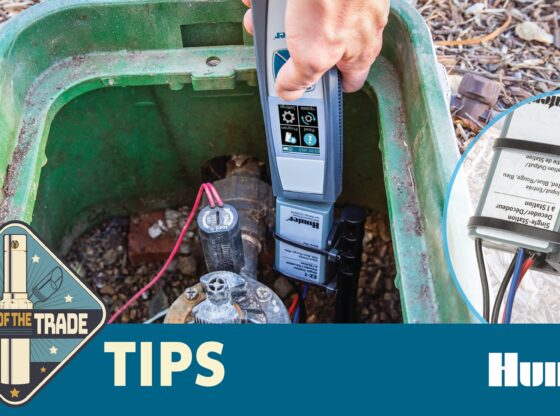As discussed in the first section of this series, there is more to irrigation design than some may think. The questions and details to be considered before every design will make the difference between a sprinkler system and an innovative efficient irrigation design. Irrigation systems should be seamless in a space, not drawing away from the landscape.
Getting into irrigation means it may be useful to know more about the irrigation system that is being installed. You can’t be a pro at every aspect, that is just too much to handle. If irrigation design isn’t your niche, don’t hesitate to hire an irrigation designer. Wolf Creek will recommend a trusted designer that will work with your needs. Read below for more logistics to irrigation design.
UNDERSTANDING THE WATER SUPPLY
The two halves of the water supply issue that need to be known are volume and pressure. Volume, usually expressed in gallons per minute or GPM, is the quantity of water available at any given time. Static pressure is measured by using a pressure gauge when no water is moving. If the water supply is a well, pond, lake, river, or harvesting/reclamation system, possible contaminants are:
- sediment, sand, or algae
- iron
- sulphur
- bacteriological agents
If the planned water supply isn’t large enough to handle all irrigation on its own, a backup supply might be necessary.
ELECTRICAL REQUIREMENTS
PUMPS
 Sometimes pumps are used to draw water from a well or pond or even to boost the available pressure higher.
Sometimes pumps are used to draw water from a well or pond or even to boost the available pressure higher.
SLEEVES AND CONDUITS
 Because irrigation piping will usually cross under paved surfaces, it’s important to plan ahead for sleeves to be installed.
Because irrigation piping will usually cross under paved surfaces, it’s important to plan ahead for sleeves to be installed.
IRRIGATION PRODUCTS
Controllers:
- basic: simple timers with few advanced features
- smart: adjusted by actual site weather or soil moisture
- traditionally-wired: one wire for each valve
- two-wire: a single wire capable of operating 100s of valves
- battery-operated: good for small isolated spots or additions

- wireless: new technology, still in development, expensive
- solar: for sites without power but with multiple valves, expensive
- Controllers can offer a mix of the above (e.g. smart two-wire)
Controller Options:
- rain sensor
- soil moisture sensor
- local weather station
- ET input
- remote control
- flow sensors
- remote management and central control
The controller is an important part of the irrigation design. Keeping in mind the information you gathered prior to the design, choosing the right controller will greatly help an owner.
Sprinklers:
- fixed-sprays: small areas (under 20’), fan spray, high PR rates
- rotators: small/medium areas (under 30’), multiple gentle streams, low PR rates
- rotors: medium/large areas (to 80’), single stream, low PR rates
Sprinkler Options:
- check valve: prevents low-head drainage
- pressure regulator: guarantees consistent pressure at every sprinkler regardless of elevation or place on pipe
- shut-off: allows individual sprinklers to be temporarily or permanently turned off
- riser height: most common are 4”, 6”, and 12” pop-up heights
- valve-in-head: each sprinkler operates independently; usually for golf courses
Low-Volume:
- inline drip tubing: has drip emitters preinstalled at regular intervals; used above or
 below ground
below ground - point source drippers: small emitters on ¼” tubing; usually for potted plants or nursery applications
- microsprays/micropops: miniature sprays for small areas
- bubblers: flood irrigation for individual plants
- indicator flags: devices used to give a visual indication that the drip system is operating properly
Choosing the right type of sprinkler for a design is crucial. A design should have head-to-head coverage to insure the maximum quality of turf and landscape. One the sprinklers and controllers are selected to best fit each zone, there are some overall design considerations when finalizing a layout. Read more next week in part3 for design considerations in efficient irrigation.











